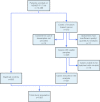25-Hydroxy vitamin-D, obesity, and associated variables as predictors of breast cancer risk and tamoxifen benefit in NSABP-P1
- PMID: 22415479
- PMCID: PMC3396331
- DOI: 10.1007/s10549-012-2012-x
25-Hydroxy vitamin-D, obesity, and associated variables as predictors of breast cancer risk and tamoxifen benefit in NSABP-P1
Erratum in
- Breast Cancer Res Treat. 2012 Oct;135(3):923
Abstract
Observational studies suggest that host factors are associated with breast cancer risk. The influence of obesity, vitamin-D status, insulin resistance, inflammation, and elevated adipocytokines in women at high risk of breast cancer is unknown. The NSABP-P1 trial population was used for a nested case-control study. Cases were drawn from those who developed invasive breast cancer and controls selected from unaffected participants (≤4 per case) matched for age, race, 5 year Gail score, and geographic location of clinical center as a surrogate for latitude. Fasting serum banked at trial enrolment was assayed for 25-hydroxy vitamin-D (25OHD), insulin, leptin (adipocytokine), and C-reactive protein (CRP, marker of inflammation). Logistic regression was used to test for associations between study variables and the risk of invasive breast cancer. Two hundred and thirty-one cases were matched with 856 controls. Mean age was 54, and 49% were premenopausal. There were negative correlations for 25OHD with body mass index (BMI), insulin, CRP, and leptin. BMI ≥ 25 kg/m(2) was associated with higher breast cancer risk (odds ratio [OR] 1.45, p = 0.02) and tamoxifen treatment was associated with lower risk (OR = 0.44, p < 0.001). Suboptimal 25OHD (<72 nmol/l) did not influence breast cancer risk (OR = 1.06, p = 0.76). When evaluated as continuous variables, 25OHD, insulin, CRP, and leptin levels were not associated with breast cancer risk (all p > 0.34). In this high risk population, higher BMI was associated with a greater breast cancer risk. Serum levels of 25OHD, insulin, CRP, and leptin were not independent predictors of either breast cancer risk or tamoxifen benefit.
Figures



References
Publication types
MeSH terms
Substances
Grants and funding
LinkOut - more resources
Full Text Sources
Medical
Research Materials
Miscellaneous

